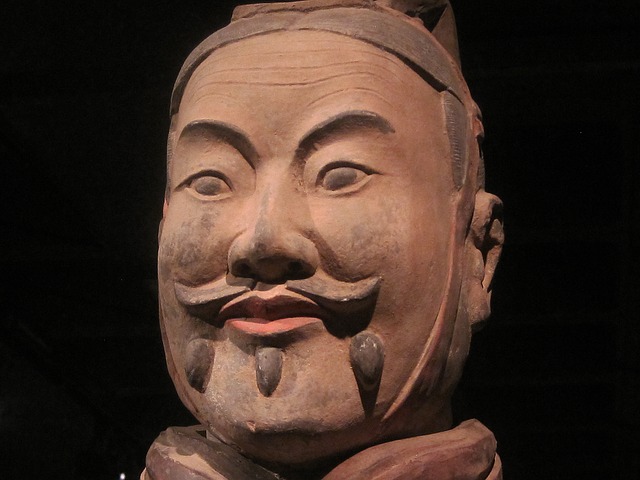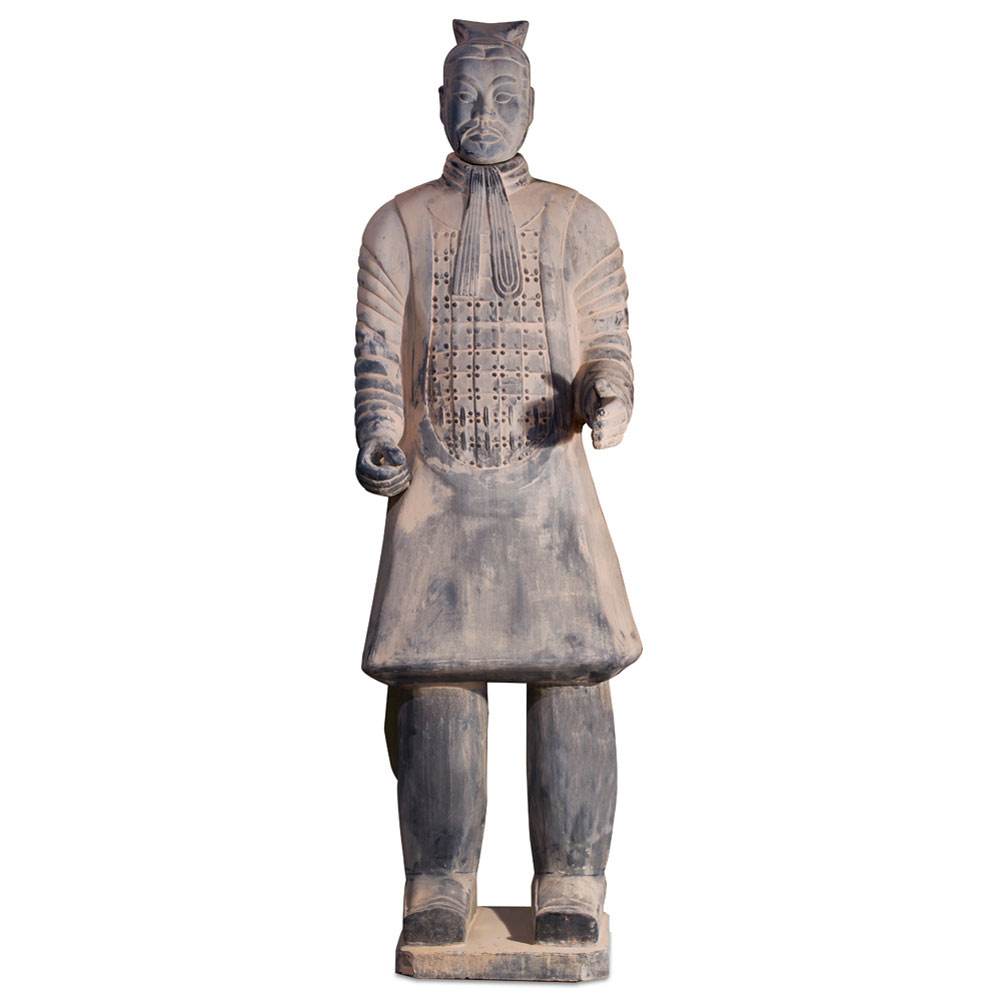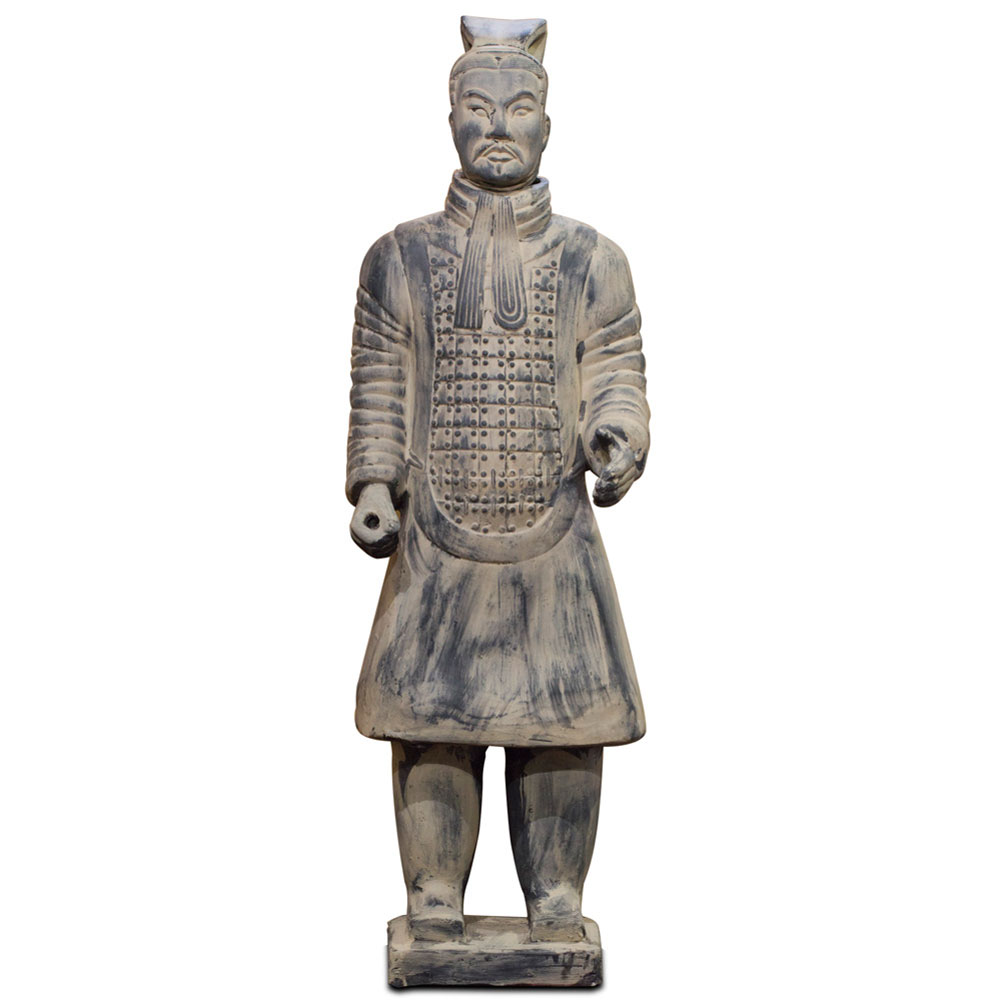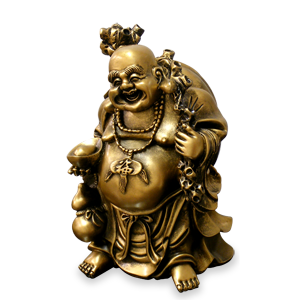China's Terracotta Warriors
In 1974, unsuspecting well diggers in China’s Shaanxi province stumbled upon strange clay fragments buried deep within the earth. There on the former site of ancient Xianyang, the capital city of China’s 1st empire, these fragments would lead to one of the greatest archaeological discoveries of the past century. Lying buried and untouched for two thousand years was a mausoleum guarded by a vast army of terracotta soldiers frozen in time.
Following the discovery, archaeologists excavated several underground vaults that were part of a vast system spanning a 22 square mile area. In total, it is estimated that these vaults contain more than 7000 life-sized clay sculptures, including foot soldiers, chariots, horses, and cavalry.
Although only a fraction of these have been unearthed, they nonetheless have lent great historical insight to Chinese art, culture, and military organization during the Warring States period and Qin Dynasty.

The excavation site of the terracotta army.
The Legacy of Qin Shi Huang
The creation of the terracotta army was commissioned by China’s 1st emperor, Qin Shi Huang, who unified China’s warring states in a series of military campaigns spanning from 230 – 211 BC. Historical accounts often paint him as a greedy warmonger, but the social and economic reforms that he administered during his reign would be adopted and expanded upon by every succeeding dynasty throughout China’s history.
Some of the emperor’s most significant contributions included the building of an imperial road network and vast agricultural framework, and the abolishing of the feudal system. His economic agenda included widespread standardization with the creation of uniform systems of weight, measurement, and script, as well as introduction of a common currency.
His influence was revolutionary, with such reforms allowing for the organization of massive public works projects which were previously impossible during the Warring States period.


Art from ancient China's Warring States period (475 BC – 221 BC) which preceeded the Qin Dynasty era (221 to 206 BC)
An Army for the Afterlife
One of the first of Qin Shi Huang’s large scale public works projects was the creation of his mausoleum and the terracotta army that would follow him in the afterlife to protect him. He commissioned thousands upon thousands of laborers for this project and it took several decades to complete.
Seeing as there were literally thousands of life-sized soldiers crafted, the level of detail seen in each one is astonishing. Each sculpture is highly individualized, with height, build, expression, dress, and even hair style appearing to be unique for each soldier. Archaeologists and historians have determined that the sculptors had up to 9 different head and facial templates to work from, with individual facial details being added after the head was molded.
Several workshops were organized with each one focusing on a specific part of the production process. Sculptors and painters would create the statues, and blacksmiths were commissioned to create the weapons for each soldier. In order for supervisors to track imperfections or mistakes, the statues were stamped with each particular workshop’s identification. These marks proved to be incredibly useful for archaeologists, allowing them to precisely trace each statue back to their time and place of origin.
When the army was excavated, the majority was still intact standing rank and file. Each soldier’s position within the formation, along with their individual characteristics and dress, signify their rank within the army.

Much of the terracotta army that was excavated was still standing rank and file just as they had been originally positioned in the mausoleum of Qin Shi Huang.

Artisans who crafted the heads of the terracotta warriors had several head size and face shape templates to work from. Facial details would be sculpted after the head was molded.
Travelling Exhibit and Public Admiration
Today, a museum complex is constructed over the site where the terracotta warriors were discovered. Widespread public interest has led to many traveling exhibits making stops at some of the most renowned museums throughout the world including the British Museum, the Museum of Metropolitan Art, and the National Library of India (just to name a few).
In 2016, the traveling exhibit made its way back to Chicago’s Field Museum where it was first featured 30 years prior. Among the display’s extensive collection of 170-plus objects were 9 terracotta soldiers, a life sized horse statue, and several bronze artifacts and weapons.
The museum even featured their own life size Terracotta Soldier replica provided by China Furniture Online that visitors could interact with and take photos alongside. The China Furniture Online store still has several life size and miniature reproductions available to the public.

Emperor Qinshihuang's Mausoleum Site Museum in Xi'an China.
Life Size Terracotta Warrior Reproductions
Browse replicas modeled after the same warrior statues excavated from Qin Shi Huang's mausoleum. Each one is crafted with individual details to denote their rank.
Miniature Terracotta Soldiers
Small to medium sized decorative accents with the same level of detail as the life sized statues.













SocialMedia